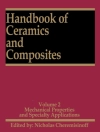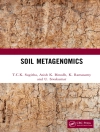Cell mechanics and cellular engineering may be defined as the application of principles and methods of engineering and life sciences toward fundamental understanding of structure-function relationships in normal and pathological cells and the development of biological substitutes to restore cellular functions. This definition is derived from one developed for tissue engineering at a 1988 NSF workshop. The reader of this volume will see the definition being applied and stretched to study cell and tissue structure-function relationships. The best way to define a field is really to let the investigators describe their areas of study. Perhaps cell mechanics could be compartmentalized by remembering how some of the earliest thinkers wrote about the effects of mechanics on growth. As early as 1638, Galileo hypothesized that gravity and of living mechanical forces place limits on the growth and architecture organisms. It seems only fitting that Robert Hooke, who gave us Hooke’s law of elasticity, also gave us the word "cell" in his 1665 text, Micrographid, to designate these elementary entities of life. Julius Wolffs 1899 treatise on the function and form of the trabecular architecture provided an incisive example of the relationship between the structure of the body and the mechanical load it bears. In 1917, D’ Arcy Thompson’s On Growth and Form revolutionized the analysis of biological processes by introducing cogent physical explanations of the relationships between the structure and function of cells and organisms.
Farshid Guilak & Robert M. Hochmuth
Cell Mechanics and Cellular Engineering [PDF ebook]
Cell Mechanics and Cellular Engineering [PDF ebook]
购买此电子书可免费获赠一本!
语言 英语 ● 格式 PDF ● ISBN 9781461384250 ● 编辑 Farshid Guilak & Robert M. Hochmuth ● 出版者 Springer New York ● 发布时间 2012 ● 下载 3 时 ● 货币 EUR ● ID 4612452 ● 复制保护 Adobe DRM
需要具备DRM功能的电子书阅读器












